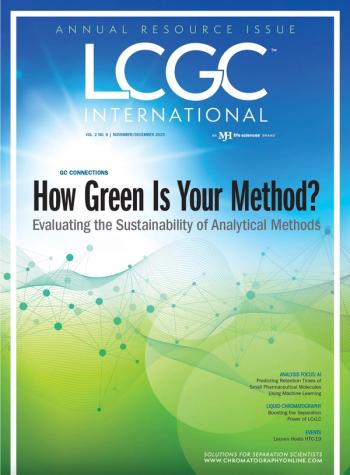
- LCGC North America-07-01-2008
- Volume 26
- Issue 7
LCGC Columnist Receives Medal
Ronald E. Majors, a senior chemist at Agilent and LCGC's "Column Watch" and "Sample Preperation Perspectives" columnist, received the Chromatographic Society's 2007 Martin Gold Medal at HPLC 2008.
Ronald E. Majors, a senior chemist at Agilent and LCGC's "Column Watch" and "Sample Preperation Perspectives" columnist, received the Chromatographic Society's 2007 Martin Gold Medal at HPLC 2008. The award, named after the Nobel Prize winner A.J.P. Martin, was presented by Professor W. John Lough, president of the Chromatographic Society of the United Kingdom.
Majors has contributed significantly to separation science research through the years, including his work in HPLC column technology, particle size studies, packing methodologies, and chemically bonded phases. He was the first to efficiently pack 5-μm particles into high performance columns and was responsible for the introduction of the first commercial microparticulate column.
Articles in this issue
over 17 years ago
A Shock to the Systemover 17 years ago
Peak Shape Problemsover 17 years ago
Continuous Flow Analysis and Discrete Analyzersover 17 years ago
LCxLC: Comprehensive Two-Dimensional Liquid Chromatographyover 17 years ago
From Academician to Entrepreneur — A Convoluted Trekover 17 years ago
RVM Scientific Acquired by Agilentover 17 years ago
The Pittsburgh Conference Launches Pittcon 2009 WebsiteNewsletter
Join the global community of analytical scientists who trust LCGC for insights on the latest techniques, trends, and expert solutions in chromatography.



